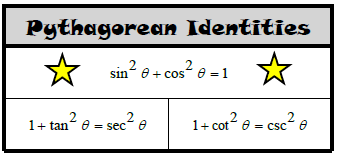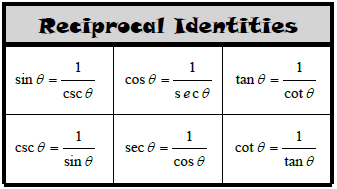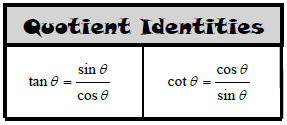
 |
|
|
|
Trigonometric IdentitiesTrigonometric identities are properties of trig functions that always hold true. Knowing these identities can make solving trigonometric problems much easier because you can simply the equation very easily.
For trigonometry, the values are angles (either in degree or radian measure).
Other identities are also listed below. The reciprocal identites are often taught early in a trigonometry curriculum.
We know some of these identities might seem a little challenging, and you might be wondering what they are used for... The simple answer is they are used to simplify equations. If you look at the quotient identities above, you can see that sin divided by cos is equal to the tan. Isn't it a lot simplier to just write tan? That's the whole idea - make life easier on yourself. Good luck!
Return from Trigonometric Identities to the main Trigonometry page. Check out GradeA's law of sines page to see how to solve for missing sides of oblique triangles.
You can also visit the GradeA homepage for more free math help. |
| . | ||
| Home │ Site Search │ Math Help Blog │ Help Keep GradeA Free | |
Written by Team GradeAmathhelp.com, all rights reserved. | ||


